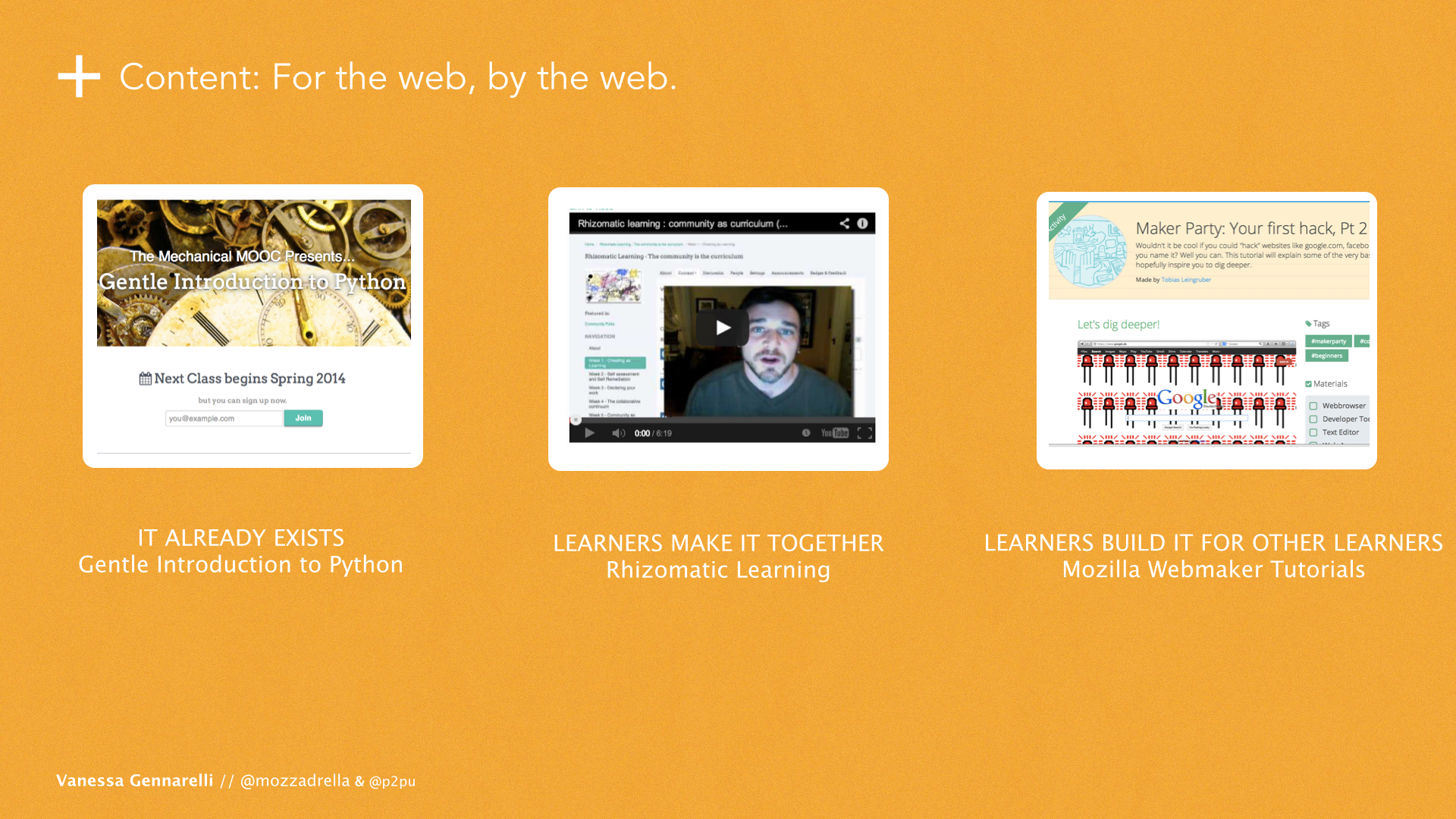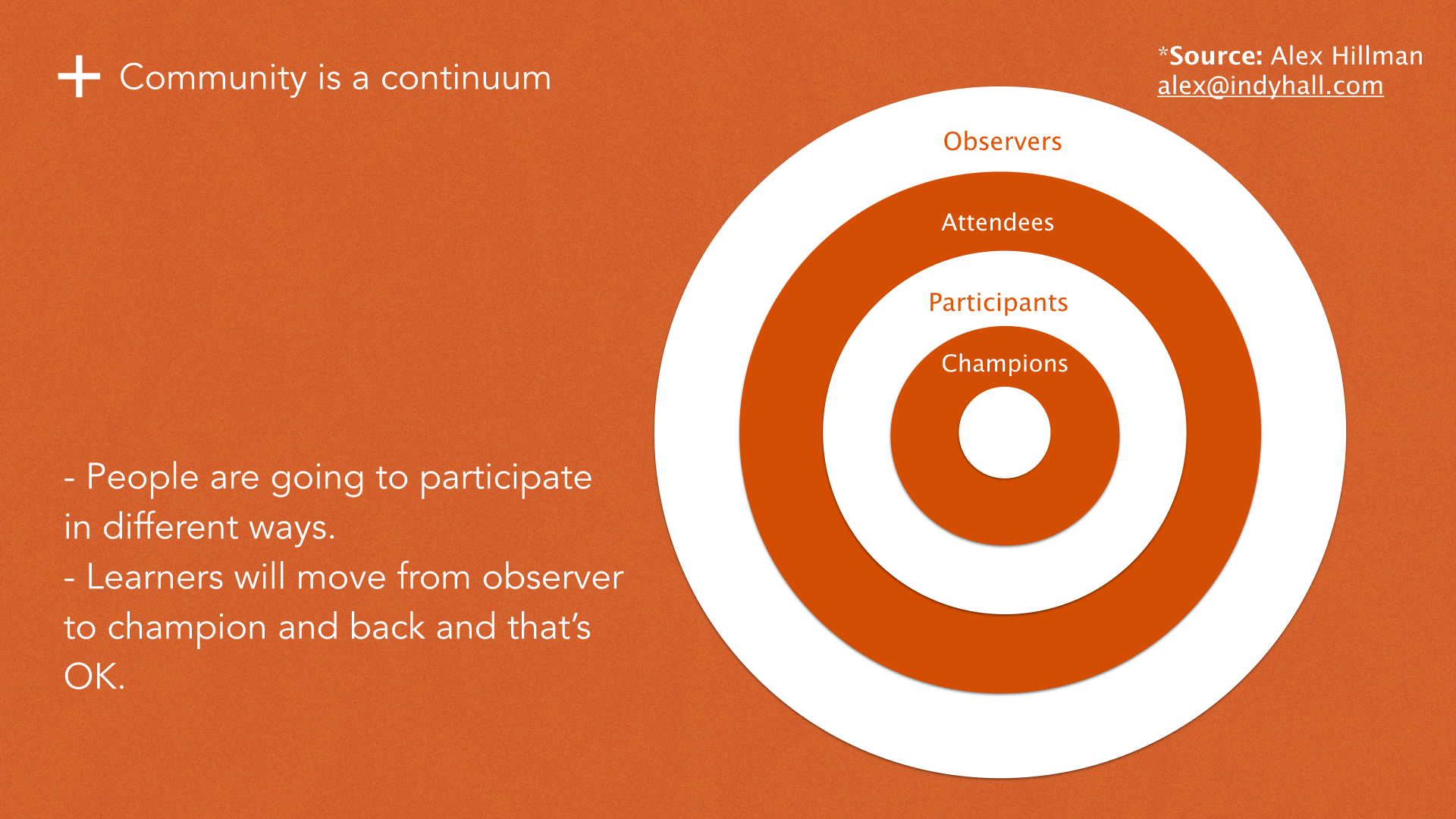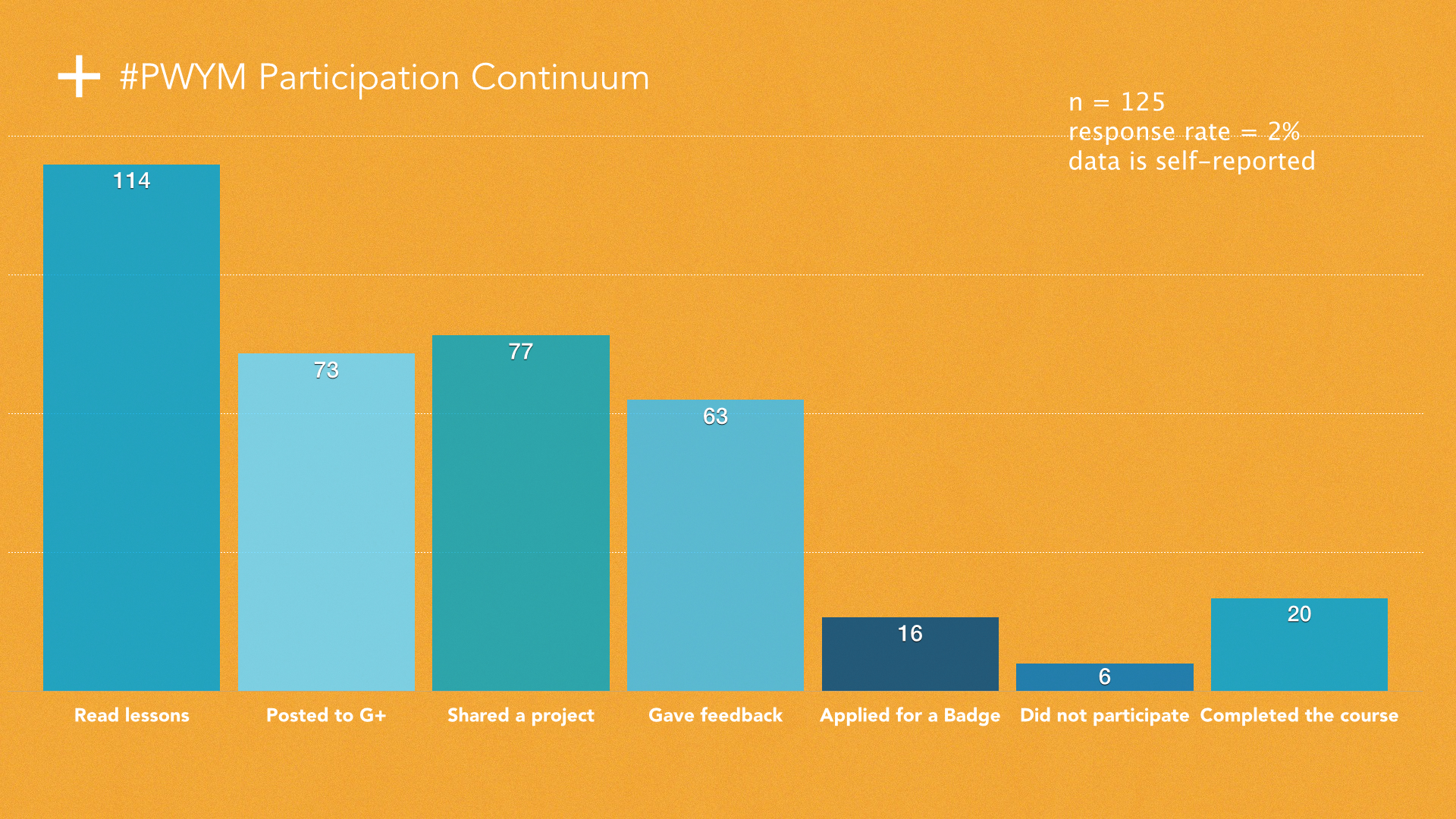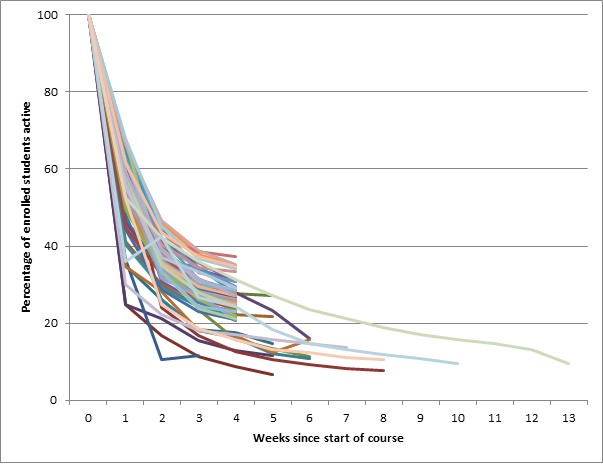Content: OER, Learning Kits and Course Length
Traditionally, online courses followed this very top-down, regimented formula:

But open online courses think about content a bit differently. Since your learners will be encouraged to find their own resources and interact with others, knowledge emerges organically. Here are a few ways that you can think about developing content in your course:

Peers co-create the content.
In the video you looked at in the last module, Jim Groom mentions that content is the “residue” of interactions in the course. What this means is that, when activities are open-ended and creative, the social interactions around them build out much of what we think of as “content” for an open course.
In another P2PU course, Rhizomatic Learning, Dave Cormier asked learners to participate in the design of the course–the community was going to decide what to learn together. After Dave “officially” stopped running the course in week 6, the course continued to evolve without him–proof of success if ever there was any.
Use openly-licensed content that already exists.
The Open Education movement and the use of Creative Commons licenses for educational content have given rise to a wealth of open educational resources. If you’d like to pull together a few foundational resources, MIT OpenCourseWare and the Saylor Foundation are both great sources for OERs you can use in your course. Don’t forget to attribute correctly.
We used openly-licensed content for our “A Gentle Introduction to Python” course, and grouped learners together around the chapters and tutorials in the main text we used. The interaction happened around the content, and it was super-nifty.
Learners can create tutorials for other learners.
Seasoned educators know that when a student teaches another student, their understanding deepens. That’s peer learning in a nutshell. You might want to prompt learners to create a “Teaching Kit” to accompany their project. For our Mozilla Webmaker course, learners created tutorials to help someone else complete the project in the future.
These teaching kits/tutorials ask learners to reflect on their project and model a “reflective practice” (mmmmm, tasty self-assessment). At the same time, learners are creating their own OERs to contributione to the wider open learning landscape.
Give Your Content a Vibe
As we mentioned earlier in this course, we create playful learning experiences that last. The wittier, chattier and more mysterious the better. We always try to strike a balance between playful language and internationalization (what’s funny in Australia might not be in Germany) but concepts that make us laugh are concepts that stick.
The Open University’s P2PU course on [“Open Research”] (https://p2pu.org/he/courses/2377/open-research/) decided to deliver all of their examples through a character named “Mr. O’Pen.”
By setting a playful tone, you are modeling how easy it can be to engage the community and making your little corner of the internet a very welcoming one.
Course Length
Let’s re-think “length.” Because ideally what you are building is an online community–one that is ongoing, self-sustaining, and engaged. And in a community, you’re never really “done”. When is the last time you were done being a musician? Or a teacher? Or a writer?
When you look at your community longitudinally, it’s natural that folks are going to participate in different ways. Our fellow community-builder Alex Hillman subscribes to the 80/20 rule: your community will break down into gradations between somewhat active and most active participants:

Participation is a continuum of activity, and our data at P2PU bears that out. When looking at one of our recent P2PU courses, folks reported engaging on a pleathora of ways:

So instead of thinking about beginning and finishing, you might think about the course you are developing as an onramp to your ongoing community that lives on P2PU.org or somewhere else. You might run Arduino 101 every 8 weeks, but the Arduino G+ group is always there to help, and that way the expert folks can help newbies.
Some relevant data as to how to design your onborading: recent research by Martin Weller and Katy Jordan indicate that, no matter what the discipline, there seems to be a 4-week long “sweet spot” in active participation.

So the first 30 days of your course make all the difference. We’d recommend a four-week onboarding course that runs regularly as an introduction to your learning community.